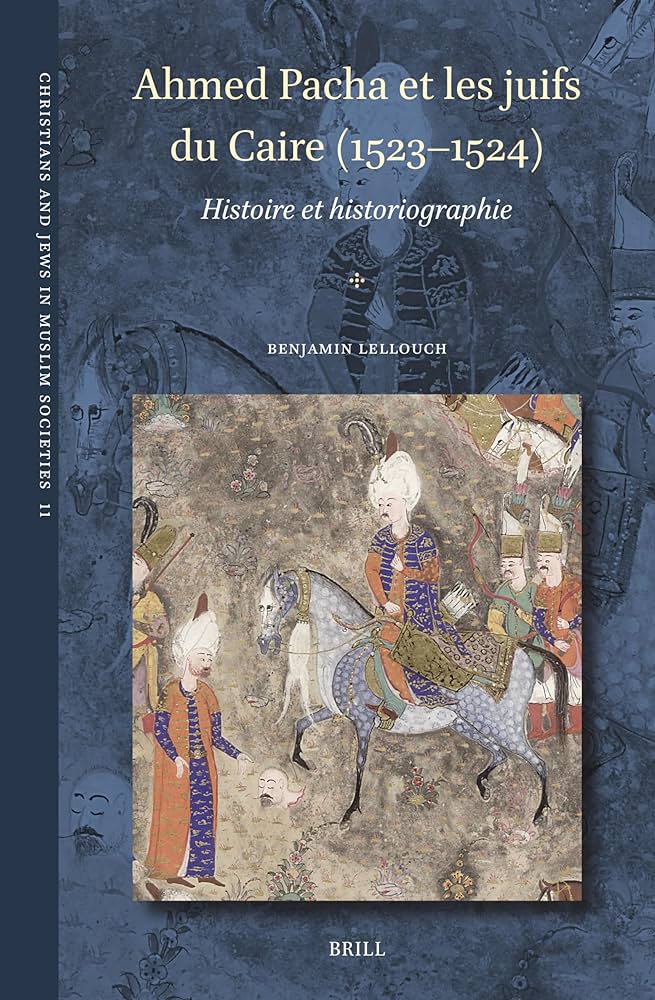Version française / Publications
Ahmed Pacha et les juifs du Caire (1523-1524)
Publié le 11 janvier 2024 – Mis à jour le 11 janvier 2024
Benjamin Lellouch, Leiden, Brill, 2024

On sait depuis longtemps que les juifs furent, parmi bien d’autres au Caire, victimes de violences pendant la révolte du gouverneur ottoman Ahmed Pacha (1523-1524), et qu’ils commémorèrent chaque année leurs épreuves au cours d’une fête locale de Pourim. Ce livre mobilise pour la première fois une riche documentation en turc, italien et arabe sur ces violences et leur contexte. Il souligne l’apport de Capsali (m. 1550), dont la chronique de la révolte en hébreu, négligée par les chercheurs, est traduite ici ; il invite à reconsidérer l’histoire de la chronique liturgique (megillah) anonyme, donc aussi celle de la fête. Dernier avatar d’une tradition historiographique vieille de cinq siècles, il renouvelle en profondeur l’exposé des faits et l’analyse des dynamiques sociales à l’œuvre dans la révolte, en les inscrivant dans l’histoire de la transition des Mamelouks aux Ottomans en Égypte et en Syrie.
It has been long known that Jews, among many others in Cairo, were victims of violence during the revolt of the Ottoman governor Ahmed Pasha (1523-1524), and that they would commemorate their sufferings each year, during a local Purim festival. For the first time, this book draws on a wealth of documentation in Turkish, Italian and Arabic on these acts of violence and their context. It highlights the contribution of Capsali (d. 1550), whose chronicle of the revolt in Hebrew – neglected by scholars – has been translated here; it also prompts readers to reconsider the history of the anonymous liturgical chronicle (megillah), and therefore that of the festival as well. As the last avatar of a five-century-old historiographical tradition, it thoroughly recasts the presentation of facts along with an analysis of the social dynamics at work in the revolt, contextualizing them within the history of the transition from the Mamluks to the Ottomans in Egypt and Syria.
It has been long known that Jews, among many others in Cairo, were victims of violence during the revolt of the Ottoman governor Ahmed Pasha (1523-1524), and that they would commemorate their sufferings each year, during a local Purim festival. For the first time, this book draws on a wealth of documentation in Turkish, Italian and Arabic on these acts of violence and their context. It highlights the contribution of Capsali (d. 1550), whose chronicle of the revolt in Hebrew – neglected by scholars – has been translated here; it also prompts readers to reconsider the history of the anonymous liturgical chronicle (megillah), and therefore that of the festival as well. As the last avatar of a five-century-old historiographical tradition, it thoroughly recasts the presentation of facts along with an analysis of the social dynamics at work in the revolt, contextualizing them within the history of the transition from the Mamluks to the Ottomans in Egypt and Syria.
Mis à jour le 11 janvier 2024












